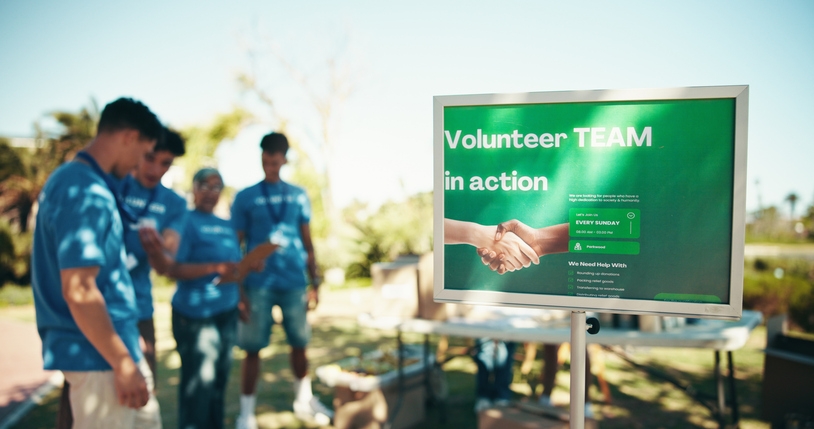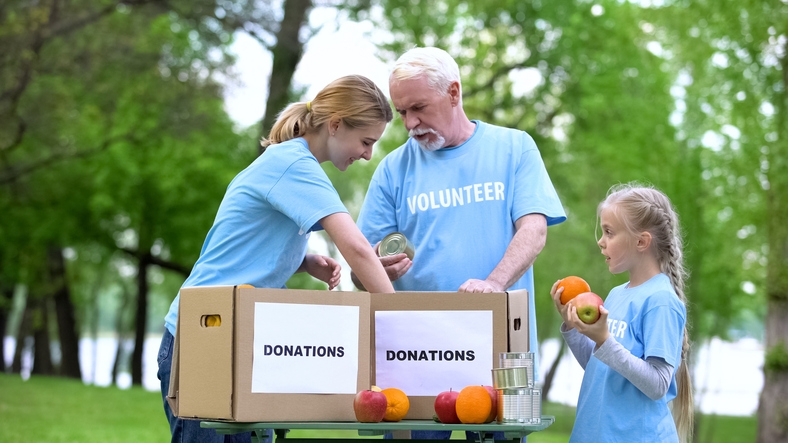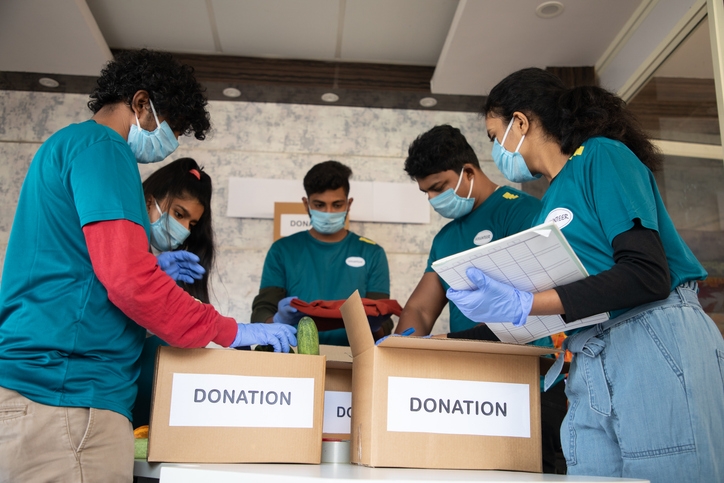Charity Event Planning for Nonprofits, Schools & Causes: A Tactical Guide
Optimize your volunteer efforts with our essential guide. Learn practical tips and strategies to enhance your logistics for successful events. Read more!

Introduction: Make Every Event Count—With Purpose and Precision
Charity events are more than parties with purpose—they’re powerful tools to raise awareness, gather in kind donations, attract major donors, and bring communities together to fuel fundraising efforts. But for nonprofit organizations, schools, and grassroots groups working with limited resources, executing a successful fundraiser takes more than passion. It takes smart strategy, streamlined event management, and creative tactics that elevate your fundraising potential.
This guide walks you through an end-to-end event planning process that’s tailored for cause-driven teams—packed with free tools, compelling examples, and practical steps to help you plan your next fundraising event with confidence.
1. Align Your Event Format With Mission & Fundraising Goals
Why your mission—not timing—should dictate your nonprofit event format.
Your fundraising event must resonate with your community and reflect your organization's mission, not just seasonal trends. Aligning your event with a cause builds authenticity and makes it easier to attract board members, corporate sponsorships, and new donors.
Smart Pairings by Type of Cause:
- A health-related nonprofit can host a "Mindful Morning" picnic for World Mental Health Day with in-person wellness booths and donation yoga.
- Schools might celebrate innovation on National Science Day with a student invention fair, raising funds via entry fees and auction items.
Execution Tip: Use storytelling as your core communication tool—share personal stories, quotes from beneficiaries, or behind-the-scenes looks at how the funds will make an impact.
Fundraising Tools:
- Promo Video Templates: Animoto, Canva Video
- Visual Storytelling Canvas: Create a “Cause-Fit Canvas” in Canva to map your event’s story to each of your fundraising goals.
Marketing Team Tip: Pre-schedule a content calendar around awareness dates that match your cause. Sync event posts with larger global movements to increase relevance and event's visibility.
Free Tool: Trello Cause Calendar Template – Track relevant awareness days tied to your mission for better timing.
2. Choose a Format That Matches Your Team Capacity and Audience—Not Just What’s Trendy
Why simpler formats often lead to more successful events (especially for small nonprofit's staff).
You don’t need a ballroom to make an impact. Complex events often drain your team—especially without a full-time marketing team. Use a structure that matches your audience’s lifestyle, budget, and your internal capacity.
Suggested Formats by Organization Type:
- Schools: Student-led walk-a-thons or talent shows, supported by QR code donations and peer-to-peer fundraising tools
- Nonprofit organizations: Blended models such as a ticketed in-person dinner plus a virtual silent auction to expand reach
- Community groups: Local “Give Back Pop-Up” in collaboration with local businesses, featuring booths, in kind donations, and community speakers
Execution Tip: Your event registration page must match your event format.
- For formal dinners, add custom fields like dietary preferences.
- For pledge events, track fundraising teams and individual goals.
Free Tool: [Jotform or Google Forms] for quick and custom registration workflows, linked with email reminders.
Resources:
- Donation & RSVP tools: Givebutter, Zeffy
- Event management platform: – for registration, promo tracking, and day-of logistics
Important Factors to Consider:
- The expected number of attendees
- Whether in-person or hybrid makes more sense for your team
- The ability to recruit volunteers and cover key roles without burnout

3. Define Clear, Measurable Fundraising Goals and Build Your Budget Around Them
Why the best fundraising efforts start with numbers—not venues.
Your fundraising goals shouldn’t just be broad hopes. They need to be broken into timelines, impact targets, and financial milestones. This allows your board members, sponsors, and internal stakeholders to align around one measurable mission.
Fundraising Goal Framework:
- Specific: Raise ₹5,00,000 to fund 500 student care kits
- Time-Bound: Complete all fundraising by October 10
- Impact-Measured: Convert donations into tangible results (e.g., 2 classrooms funded, 1 clinic built)
Build a Backwards Budget:
Start with the goal, then break it into line items based on what you need to reach it:
- Venue or permit costs
- Marketing content and promotional materials
- Auction items sourcing or printing
- Unexpected costs buffer (10–15%)
- Fundraising tools like donation software, SMS alerts, or survey tools
- Volunteer roles or paid staff support
- Ticket packages setup, including early-bird tiers and group deals
Fundraising Tools:
- Google Sheets Budget Tracker Template
- Notion Nonprofit Dashboard
- Meta Ads Library for benchmarking event’s visibility
Marketing Team Tip: If you're running multiple future events, save each budget and note what went over or under. This historical knowledge builds smarter planning processes for your next fundraising event.
Board Member Strategy: Assign one board member to oversee budget approvals and another to manage sponsor relationships—splitting duties increases accountability.
Additional Resources:
- Charity Navigator for benchmarking costs vs. impact
- GuideStar for sharing and comparing nonprofit event case studies
- Canva’s “Fundraising Kit” templates for all design needs (posters, email headers, sponsor decks)
5. Partner With Local Businesses and Corporate Sponsors to Maximize Visibility and Event Budget
You don’t need globally recognized brands to run a successful fundraiser—what you need are mutually beneficial partnerships aligned with your cause and community. Strategic collaborations with local businesses and corporate sponsors can significantly increase your event’s visibility, ease the event budget, and support event goals.
What You Can Offer:
- Sponsor booths or branded zones at your upcoming event
- Social media shoutouts across your channels
- Logo placements on digital invites, signage, and the event registration page
- Naming rights to high-traffic areas (e.g., “ABC Company Kids’ Zone”)
Creative Partnership Ideas:
- Invite business sponsors to co-host a raffle or breakout game zone
- Build sponsorship packages with tiered perks (e.g., ₹10,000 = branded banner; ₹25,000 = main stage visibility + VIP tickets)
- Provide in-kind donations as alternatives for smaller sponsors
Execution Tip: Highlight how many event attendees are expected, their demographics, and how brand exposure at your event supports their business goals.
Financial Goals Note: Securing just 3–5 sponsors can often cover 30–50% of your detailed budget—and help you raise more funds for your mission.
6. Select a Venue That Supports Accessibility, Layout Flow, and Nonprofit Event Logistics
Yes, ambiance matters—but your event’s success hinges more on functionality and logistical planning than pretty décor.
What to Consider Beyond Beauty:
- Accessibility for seniors, people with disabilities, and parking proximity
- Layout flexibility for booths, silent auctions, or breakout stations
- Power access, Wi-Fi, and indoor/outdoor backup options (weather contingencies)
- Built-in seating, A/V equipment, or catering areas (cut rental costs)
Execution Tip: Use historical data from past events to design your ideal venue layout. Where did bottlenecks occur? Where did guests linger longest?
Following Factors to Prioritize:
- Venue capacity aligned with expected number of attendees
- Total cost vs. amenities included
- Weather risks and noise restrictions
- On-site support available
Bonus Tip: Negotiate promo tie-ins with the venue (like mentions on their social pages or discounted space for your next fundraising event).

7. Build a Smart Tech Stack to Simplify Event Management and Improve Donor Tracking
Great event management starts with the right tech. But more tools don’t equal better outcomes. Choose a lean stack that supports your event planning process and offers all the features your team needs—without overcomplicating setup or execution.
Useful Tools:
- Event registration: Azavista, Zeffy
- Fundraising event tracking: Givebutter, Donorbox
- Content calendar: Trello, Notion
- Donor database: Bloomerang, HubSpot for Nonprofits
Smart Integration Tips:
- Make sure your event management platform links to your email software and donation pages
- Use custom fields on the registration form to collect dietary needs, T-shirt sizes, or interest areas
- Automate follow-ups for donors who abandon the ticket purchase process
Execution Tip: Use integrated tech to track ticket sales, apply promo codes, and monitor event metrics in real time—this helps refine messaging and hit your financial goals faster.
8. Create a 21-Day Promotional Plan That Drives Attendance, Ticket Sales & Donor Engagement
Forget the flyer blast. Purposeful content builds momentum, drives event attendees, and supports long-term event goals.
What to Share (And Why):
- Impact visuals: “Every ₹1,000 = 2 hygiene kits for students”
- Compelling calls to action: “Share this post to unlock early access raffle entries!”
- Real testimonials: Stories from last year’s beneficiaries or board members
Content Formats That Work:
- Carousel posts (before/after photos, impact stats, team intros)
- Instagram stories and reels with behind-the-scenes prep
- Weekly segmented email blasts for different audiences (volunteers, past donors, first-time ticket buyers)
Promotion Hacks:
- Offer time-sensitive promo codes to incentivize quick ticket sales
- Repurpose user-generated content with branded thank-you templates
- Track open rates and engagement using built-in analytics or third-party tools like Mailchimp or Brevo
Execution Tip: Start your content calendar three weeks ahead of launch. Focus the first week on awareness, the second on action, and the third on urgency.
9. Deliver an Impactful Event Day Experience That Inspires Giving and Loyalty
The event day is your moment to create a memorable, emotional experience that drives action—not just attendance. A well-planned atmosphere can turn passive guests into passionate advocates and increase your fundraising potential in real time.
Design a Donor-Centric Experience:
- Use warm ambient lighting, uplifting background music, and a charismatic live host to set the tone
- Feature a digital “Donation Wall” that updates in real time with donor names or amounts
- Place QR codes on tables, program cards, signage, and auction items for instant giving
Event Day Logistics Checklist:
- Use scan apps to sell tickets at the gate and collect attendee information for follow-up
- Prep branded thank-you kits with educational resources, small tokens, or in-kind donations from sponsors
- Have volunteers or photographers capture short interviews with new donors, returning attendees, or beneficiaries
Pro Tip: Set up a “Why I Gave” video booth or selfie wall with your nonprofit’s logo—great for post-event content and social proof.
Goal: Leave a lasting impression that keeps donors engaged far beyond your upcoming event. Great event planning doesn’t stop at logistics—it’s about emotional storytelling that inspires giving on the spot.
Tool Suggestions:
- Donation wall/leaderboard: Givebutter or Donorbox integrations
- QR creation tool: Beaconstac or Canva QR generator
- Check-in/ticketing app: Azavista or Eventbrite
10. Analyze Your Event Metrics, Capture Insights & Set Benchmarks for Future Nonprofit Events
Post-event reflection is essential to professional event management. Analyzing your fundraising event’s performance helps improve your event planning process, attract future corporate sponsors, and prepare your marketing team and nonprofit’s staff for even more successful fundraising events.
Key Event Metrics to Track:
- Registrations vs. actual event attendees
- Total funds raised and ROI per channel (email, social, sponsor referrals)
- Percentage of new donors vs. repeat supporters
- Effectiveness of ticket packages and promo codes
- Highest-performing promotional materials or content types
- Attendee feedback through quick post-event surveys
Action Steps:
- Send a recap email to event sponsors and donors with:
- Testimonials and highlight stats
- Photos and behind-the-scenes content
- A clear CTA to attend your next fundraising event
- Update your donor database with segmented tags and donor notes (e.g., high-value donor, silent auction participant, volunteer interest)
- Archive all educational resources, promo assets, videos, and best-performing registration page templates in a shared folder
Next Moves:
- Use insights to benchmark goals for future events
- Create a one-pager case study for corporate sponsorships
- Keep a living swipe file with event ideas that can be reused or improved
Pro Tip: If your event was tied to a specific fundraising campaign (e.g., student meals, school renovation, health awareness), track how long the giving continued after the event to measure momentum and long-term engagement.

Final Thoughts: Run a Successful Fundraising Event With Purpose, Process & Heart
Charity events—whether for schools, nonprofits, or grassroots causes—are an incredible opportunity to not only raise awareness, but to spark change and build meaningful communities. With a clear planning process, aligned tools, and focused energy, you can execute successful fundraising events that drive impact long after the curtains close.
Whether you're recruiting your first volunteer or managing complex events with multiple ticket packages, this guide—and tools like Azavista—can help you simplify planning, track progress, and drive more results.
Ready to manage event registration, donor data, and volunteer tracking in one place? Explore Azavista for powerful nonprofit-friendly event planning.
More Event Marketing and Promotion












